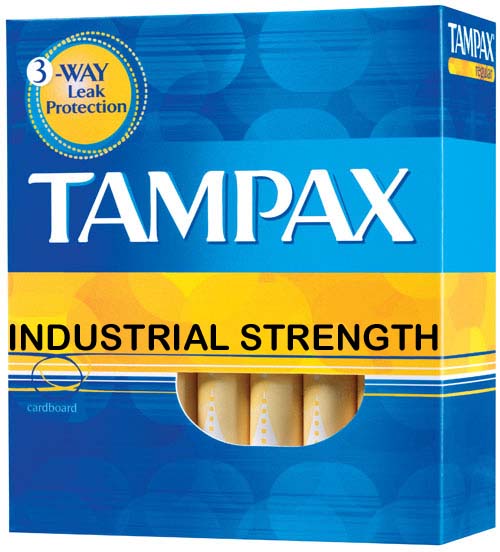Environment Archive
BP Oil Spill Fix Inspiration: The Toy Store
June 14th, 2010. By AbiK
 As officials try to get a better gauge on just how much oil is spewing from the undersea well, and as we all await President Obama to address the nation on the BP Oil Spill tomorrow night at 8:00 p.m. EDT, we take a look at a couple of BP Oil Spill Fix ideas-of-the-day that take their cues from an unlikely source: the toy store. The beauty of both ideas is that they come from toys that are now considered “classics”–the one, Kerplunk, now has jazzed up colors but remains pretty much as it always was; the other, the Phlat Ball, has its design foundation in the quintessential beach disc, the Frisbee.
As officials try to get a better gauge on just how much oil is spewing from the undersea well, and as we all await President Obama to address the nation on the BP Oil Spill tomorrow night at 8:00 p.m. EDT, we take a look at a couple of BP Oil Spill Fix ideas-of-the-day that take their cues from an unlikely source: the toy store. The beauty of both ideas is that they come from toys that are now considered “classics”–the one, Kerplunk, now has jazzed up colors but remains pretty much as it always was; the other, the Phlat Ball, has its design foundation in the quintessential beach disc, the Frisbee.
Fix the BP Oil Spill Idea #9
Kerplunk! from sent in by RS
 “1 word – Kerplunk. In this game several sticks are inserted horizontally through a vertical shaft to prevent marbles from falling. Couldn’t they insert a few thousand rods of steal at an angle from the sides of the shaft effectively stemming the spew of oil. This wouldn’t be the end answer but it would slow things down and maybe give that hydrolic mud they tried pumping down there something to cling on to. Heck they could use something like rubber marbles instead and that would work..”
“1 word – Kerplunk. In this game several sticks are inserted horizontally through a vertical shaft to prevent marbles from falling. Couldn’t they insert a few thousand rods of steal at an angle from the sides of the shaft effectively stemming the spew of oil. This wouldn’t be the end answer but it would slow things down and maybe give that hydrolic mud they tried pumping down there something to cling on to. Heck they could use something like rubber marbles instead and that would work..”
Dilating Frisbee sent in by Michael:
 “I recently saw a toy that might be enlarged and modified to contain the flow and possibly enable capture. It is a dilating frisbee. When thrown from its compressed size it expands to its full size. With a larger modified version (perhaps a collar attached to the bottom edge) it could be lowered at its full size and then reduced/dilated to its smaller stronger size. The collar would help funnel the gusher gradually to the center where a collection point where the oil could be focused in to a pumping device.”
“I recently saw a toy that might be enlarged and modified to contain the flow and possibly enable capture. It is a dilating frisbee. When thrown from its compressed size it expands to its full size. With a larger modified version (perhaps a collar attached to the bottom edge) it could be lowered at its full size and then reduced/dilated to its smaller stronger size. The collar would help funnel the gusher gradually to the center where a collection point where the oil could be focused in to a pumping device.”
I’m thinking Michael’s referring to a Phlat Ball, shown here at left in its flattened state. Once airborn it opens up and looks more like a ball than a frisbee.
Got an idea you’d like to share? Let us know. Or email our editor at .
Thanks RS and Michael!
BP Oil Spill Fix (#8)
June 11th, 2010. By AbiK
 The latest news on the BP Oil Spill puts the estimate on the amount of oil leaking out at 1.7 million gallons per day. That’s a lot of oil, and as cnn.com notes, that means the BP Oil Spill is now approximately eight times that of the Exxon Valdez mess. Or, as a NY Post headline states, the BP Oil Spill makes the Exxon Valdez look like a grease spot. Indeed. With that, our latest idea on how to fix this mess is from Lorraine, who also refers to herself as a “concerned citizen”:
The latest news on the BP Oil Spill puts the estimate on the amount of oil leaking out at 1.7 million gallons per day. That’s a lot of oil, and as cnn.com notes, that means the BP Oil Spill is now approximately eight times that of the Exxon Valdez mess. Or, as a NY Post headline states, the BP Oil Spill makes the Exxon Valdez look like a grease spot. Indeed. With that, our latest idea on how to fix this mess is from Lorraine, who also refers to herself as a “concerned citizen”:
Fix the BP Oil Spill Idea #8
“Instead of trying to plug up the well, how about creating a funnel or hose of some type in order to direct the oil into a container or where it needs to go? My idea is that: using a pliable material (waterproof fabric?), such as the one they use for fire hoses, create a large enough “hose” that would fit around the neck of the well and long enough to reach a container of some sort. Since the “hose” is made out of a pliable fabric, it could be brought down to the well folded accordian-style into a ring and then slipped over the neck of the well and then attached with rivets. Then once the rivets were secure, the fabric could then be unfolded over the spill and the oil should funnel into the hose and into whatever containment area is decided upon.”
Got an idea you’d like to share? Let us know. Or email our editor at .
Thanks Lorraine!
Hey BP, Catch a Clue from Letterman
June 10th, 2010. By Hunter West
 The BP oil spill has galvanized public opinion on not only the concept of drilling for a non-renewable resource in the midst of another non-renewable resource (water), but the responsibilities of those charged with the drilling process.
The BP oil spill has galvanized public opinion on not only the concept of drilling for a non-renewable resource in the midst of another non-renewable resource (water), but the responsibilities of those charged with the drilling process.
Now the public is asking another question: why are BP, and their federal partners in the effort to contain the spill, being so allegedly secretive?
The New York Times yesterday went public with a number of examples of attempted censorship of the news media trying to cover the spill. The oil spill, and the efforts to contain it, is easily the biggest news story of the year and one of the biggest environmental disasters of all time.
Naturally, the media wants to cover it. America is hungry for details. Americans—especially those living in, or near the affected area, want to know just how bad things are. The rest of the world and anyone around the globe with any sensitivity to the environment and eco systems are also galvanized by this story.
And yet, there appears to be an effort to control what goes out. As The New York Times details, various media outlets have been stymied from filming from the air, or from the ground, in various instances. BP denies this—as do the various agencies that have set up command centers in BP-owned buildings (isn’t THAT convenient…). Last month Southern Seaplane out of Louisiana wanted to take a photographer from the Times-Picayune of New Orleans up over the Gulf for a photo shoot.
Southern Seaplane reports they were questioned intensively, and then denied. The Federal Aviation Administration (FAA) was apparently also part of that decision—and the agency has Read the rest of this entry »
BP Oil Spill Fix (#7)
June 10th, 2010. By AbiK
 So now I’m just posting BP Oil Spill ideas as they come in—and there are plenty coming in—thanks everybody! It’s now day 52 of the oil spill and Perdido Pass has been closed. This idea from Caleb takes its cue from Geotechnical Engineering. It’s an area I know nothing about, but I’m sure some of you out there do.
So now I’m just posting BP Oil Spill ideas as they come in—and there are plenty coming in—thanks everybody! It’s now day 52 of the oil spill and Perdido Pass has been closed. This idea from Caleb takes its cue from Geotechnical Engineering. It’s an area I know nothing about, but I’m sure some of you out there do.
Fix the BP Oil Spill Idea #7
“I believe that capping the well permanently is a very viable idea. In Geotechnical Engineering a technique for oceanic foundations design utilizes Suction Piles. They are very large cylinders which are floated to locations, filled with water, sunken into place, water is pumped out, and they are “sucked” down into the ocean bottom. They are large cylinders which could be used to cap the area which is discharging excessive volumes of crude oil into the gulf. This is a relatively expensive process, but with the bounds that have been made and the relatively low success rate, I think that some sort of Suction Pile retrofit would be a possible solution.”
Got an idea you’d like to share? Let us know. Or email our editor at .
Thanks Caleb!
Going Fem with More Fix the BP Oil Spill Ideas-of-the-Day
June 9th, 2010. By AbiK
 Ok, today’s like a radio station’s Two-for-Tuesday (or three or four?) for BP Oil Spill Fix ideas. Only it’s Wednesday. Whatever. I so need to post these…we’ve now gotten several ideas for fixing the oil spill that have a theme in common: FEMININE HYGIENE. Yes, there’s no shortage of (parental discretion advised here folks) suggestions to use a tampon-like apparatus to suck up the oil. Granted, it would have to be a mighty big tampon—and I don’t even want to think of what the equivalent of Toxic Shock Syndrome would be here for such a large sponge-like contraption. Be that as it may, here’s a couple of our readers’ ideas—some are from folks who just might surprise you a bit—like this first one…
Ok, today’s like a radio station’s Two-for-Tuesday (or three or four?) for BP Oil Spill Fix ideas. Only it’s Wednesday. Whatever. I so need to post these…we’ve now gotten several ideas for fixing the oil spill that have a theme in common: FEMININE HYGIENE. Yes, there’s no shortage of (parental discretion advised here folks) suggestions to use a tampon-like apparatus to suck up the oil. Granted, it would have to be a mighty big tampon—and I don’t even want to think of what the equivalent of Toxic Shock Syndrome would be here for such a large sponge-like contraption. Be that as it may, here’s a couple of our readers’ ideas—some are from folks who just might surprise you a bit—like this first one…
More Ideas-of-the-Day to Fix the BP Oil Spill
This one’s from Judy B’s 83-year old mother:
“Ms. Nancy – I was just speaking with my 83 year old mother by phone. She mentioned that she had a thought on how to fix the BP issue…woman style. She laughed and commented that tampons would stop the flow…of course, they would have to be size adjusted. Mom said that if one didn’t work, they could just keep stuffing them into the pipeline until it is plugged…just like the bathroom plumbing! As we talked we also thought that pads (ie Kotex pads) or rather blockaide devices made from similar rmaterials might also help the waterways, beaches, and marshes…absorb the oil before it can do damage/more damage to these natural areas!
Thought I would pass this along for her! Thanks…Judy B”
and from smwhite…
“All else has failed obviously in trying to stop the leaking oil and destroying everything around it. What is wrong with you people? With all the professionals you have at your disposal, surely to God you can come up with a better idea than a “top hat” and “junk fillers”?? I say, why don’t you contact the makers of Tampax tampons, build a “super size” one and make it waterproof and try plugging it with that? or do a hysterectomy!! I am not joking. I am a Newfoundlander and we have oil rigs off our coast as well. I would be so pissed if the same thing happened here and our government and the oil companies responsible couldn’t come up with a better idea than what you guys have been trying so far. Seriously, get your heads out of the Gulf coast sand and start using some old fashioned ideas or there won’t be any sand or wildlife left, not to mention what your lack of success is doing to the Gulf coast fishermen and women who rely on this for their livelihood. Hope you respond or at least put this out there for some consideration. It certainly can’t hurt to try.”
Got an idea you’d like to share? Let us know. Or email our editor at .
Thanks Judy B. and smwhite!
Archive by Category
- Accidents (24)
- Airlines (9)
- Asbestos Mesothelioma (262)
- Automotive (25)
- Celebrity (14)
- Class Action (84)
- Complaints/Comments (15)
- Consumer Fraud (84)
- Contest (2)
- Court of Public Opinion (5)
- Crazy Sh*t Lawyers See (61)
- Criminal Law (4)
- Defective Products (111)
- DePuy ASR Hip Recall (2)
- Discrimination (22)
- Drugs/Medical (248)
- Elder Care Abuse (4)
- Emerging Issues (462)
- Employment (54)
- Environment (52)
- Financial (28)
- Food Illness (15)
- Human/Civil Rights (4)
- Insecurities (5)
- Insurance (16)
- Intellectual Property (16)
- Internet/E-commerce (19)
- lawsuits (161)
- Lawyers (20)
- Lawyers Giving Back (43)
- Lex Levity (10)
- Personal Injury (106)
- Pleading Ignorance (53)
- Real Estate (2)
- Recall (6)
- Scam (3)
- Securities (13)
- Settlement (81)
- Tort Reform (2)
- Totally Tortelicious (81)
- Veterans (11)
- Whistleblower (9)